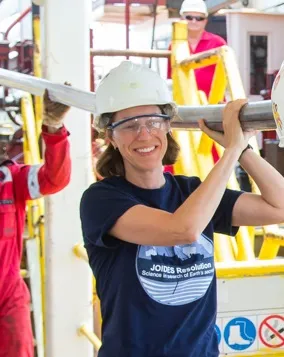About the project
The project involves study of the faulting within subduction zone forearcs and associated fluids using seismic reflection and other datasets. Slip on the subduction plate-bounding fault is known to generate large magnitude earthquakes and tsunami, but also produces internal deformation through slip on many faults within the forearc, but these have not previously been systematically studied.
The main aims are to understand how these different fault systems develop, how strain is distributed through a forearc, and the role faulting plays in controlling fluid flow within such systems. Gas hydrates and mud diapirism are common at many of these margins and the interaction between faulting and fluid trapping and fluid flow in these environments will be explored. Improved understanding of the development of thrust faults, and other fault types, will provide important data on how faulting affects the potential for fluid storage, including CO2 storage for decarbonisation and trapping of hydrocarbon resources.
This project is also relevant to our improved understanding of geohazards in terms of how fluids affect fault slip, generating earthquakes and tsunami, and marine slope failure, which can impact seafloor infrastructure. Example subduction zones to be used in the project are:
- Sumatra
- the Makran
- Cascadia
For full project details visit the Inspire project page.
Supervisors
- Professor Lisa Mcneill (University of Southampton)
- Professor Tim Henstock (University of Southampton)
- Professor Tim Minshull (University of Southampton)

